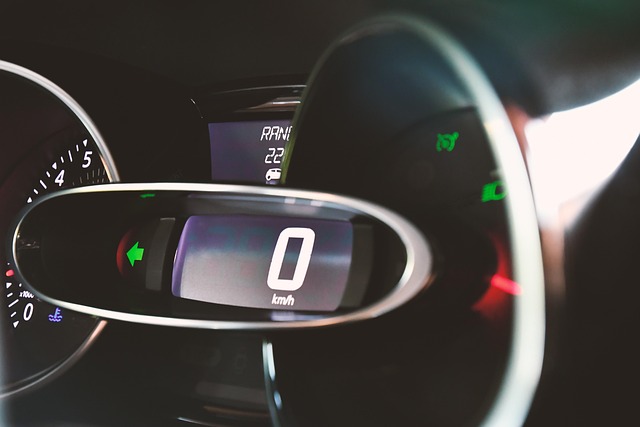Managing internal links across multiple WordPress sites can be simplified through automatic internal linking solutions, saving time and enhancing user experience while boosting SEO. In today's digital era, advanced algorithms integrate relevant content, improve page load times, and communicate page relationships to search engines. When choosing a tool, prioritize seamless integration, intuitive interfaces, contextual anchor text generation, and smart link placement. Best practices involve creating contextually relevant links through dedicated plugins, significantly improving WordPress sites' visibility and performance in search engine results. Examples across industries highlight the transformative power of efficient automatic internal linking for user experiences and content management.
In the vast landscape of WordPress, managing internal links across multiple sites can be a daunting task. This is where automatic internal linking software steps in as a game-changer. Designed for users seeking streamlined solutions, this technology simplifies the process, enhancing SEO and user engagement. This article explores the challenges of manual linking, delves into the benefits of automated tools, outlines key features to consider, provides integration guides, shares real-world success stories, and guides you in choosing the perfect automatic internal linking solution tailored to your WordPress needs.
- Understanding the Challenge of Internal Linking on WordPress Sites
- The Benefits of Automatic Internal Linking Software
- Key Features to Look for in an Automatic Internal Linking Tool
- Integrating Automatic Internal Linking into Your WordPress Setup
- Real-World Use Cases and Success Stories
- Choosing the Right Automatic Internal Linking Solution for Your Needs
Understanding the Challenge of Internal Linking on WordPress Sites

Managing internal links across multiple WordPress sites can be a complex and time-consuming task for website administrators. As websites grow, especially those with extensive content libraries, keeping track of relevant internal connections becomes increasingly challenging. The challenge lies in ensuring that related content is linked together seamlessly while adhering to best practices for SEO and user experience.
This is where an automatic internal linking strategy comes into play. By utilizing software solutions designed for this purpose, website owners can streamline the process, saving time and effort. An automatic internal linking tutorial or tips can guide users on implementing this efficient system, allowing them to focus on content creation while the software handles the linking infrastructure. This strategic approach ensures a robust network of internal links, enhancing user navigation and search engine optimization.
The Benefits of Automatic Internal Linking Software

In today’s digital landscape, where content is king, maintaining a robust and strategic internal linking structure across multiple WordPress sites can significantly enhance user experience and SEO performance. This is where automatic internal linking software steps in as a game-changer. By employing sophisticated algorithms, this technology seamlessly integrates links between related pages on different websites, fostering a cohesive digital experience for users while boosting search engine optimization (SEO) efforts.
One of the key advantages of these tools is their ability to automatically suggest relevant content for linking, based on an analysis of your site’s content and structure. This not only saves time and effort but also ensures that internal links are contextual and valuable, reflecting a natural reading experience. Moreover, an automatic internal linking strategy can improve page load times, as users don’t have to navigate through numerous external links to find relevant information within your network of sites. This enhanced user journey is mirrored in SEO benefits, including improved crawlability and better signal transmission to search engines about the relationships between pages on your website.
Key Features to Look for in an Automatic Internal Linking Tool

When choosing an automatic internal linking tool for WordPress sites, there are several key features to consider. Firstly, look for a tool that seamlessly integrates with your existing WordPress setup, ensuring smooth and efficient automation without requiring complex technical configurations. An intuitive interface is equally crucial; you should be able to easily manage and monitor the internal linking process without delving into intricate settings.
Secondly, focus on tools offering advanced optimization capabilities, such as contextual anchor text generation and smart link placement. These features ensure that your internal links are not only automatic but also relevant and contextually appropriate, enhancing user experience and search engine visibility. Additionally, some tools provide detailed analytics and reporting, allowing you to refine your automatic internal linking strategy over time based on performance insights.
Integrating Automatic Internal Linking into Your WordPress Setup

Integrating automatic internal linking into your WordPress setup offers a seamless way to enhance content connectivity and boost SEO efforts. This feature automatically generates links between relevant pages on your site, ensuring that your users can navigate effortlessly while search engines crawl and index your content more efficiently. By implementing this strategy, you not only improve the overall user experience but also create a robust internal linking structure.
When setting up automatic internal linking, consider utilizing WordPress plugins designed for this purpose. These tools provide an array of tips and optimization techniques to ensure your links are contextually relevant and beneficial for both users and search algorithms. By following best practices in automatic internal linking SEO, you can significantly improve the visibility and performance of your WordPress sites in search engine results.
Real-World Use Cases and Success Stories

In today’s digital landscape, websites are often part of a broader online presence, with multiple WordPress sites catering to various audiences and purposes. This presents a unique challenge when it comes to internal linking, which is crucial for search engine optimization (SEO) and user navigation. Here’s where tools offering automatic internal linking optimization shine.
Real-world use cases demonstrate the profound impact of these solutions. For instance, news websites utilize automatic internal linking tips to seamlessly connect related articles, enhancing reader engagement. E-commerce platforms employ an automatic internal linking strategy to create product-to-product associations, improving customer journeys and boosting sales. These examples highlight how efficient internal linking can transform user experiences while simplifying content management for site administrators.
Choosing the Right Automatic Internal Linking Solution for Your Needs

When selecting an automatic internal linking solution for your WordPress sites, it’s crucial to align the tool with your unique content needs and SEO goals. Not all solutions are created equal; some offer advanced features like contextual anchor text variation and smart link placement, while others provide basic automatic linking with limited customization. Understanding your website’s structure, target audience, and desired search engine visibility is key to making an informed decision.
Consider a solution that integrates seamlessly with your existing WordPress setup, offers robust analytics to track performance, and allows for fine-tuning of the automatic internal linking strategy. Following best practices for automatic internal linking SEO, such as focusing on relevant and related content, can help ensure your links enhance user experience while boosting search engine rankings. Remember, an effective automatic internal linking strategy is not just about automation; it’s about intelligent connection between pages that enriches both users and search engines.
